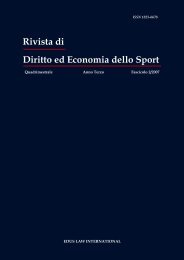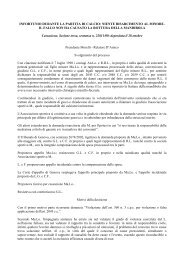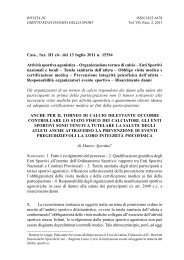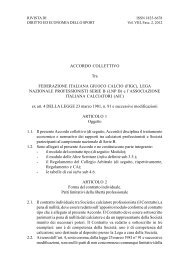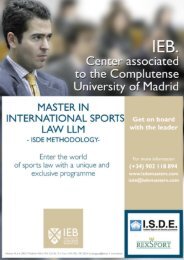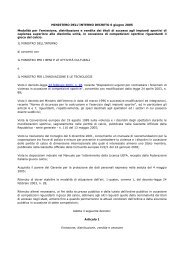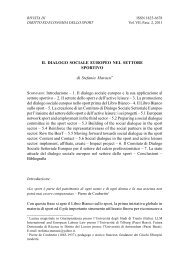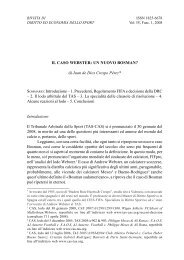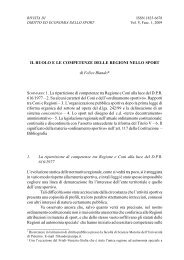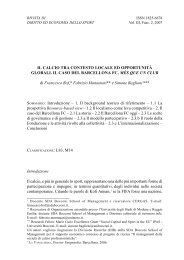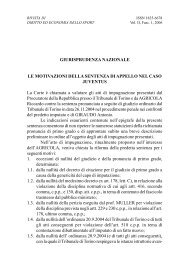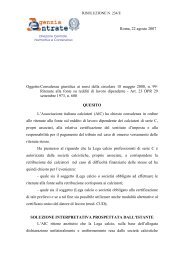European Sports Law and Policy Bulletin THE BERNARD ... - Slpc.eu
European Sports Law and Policy Bulletin THE BERNARD ... - Slpc.eu
European Sports Law and Policy Bulletin THE BERNARD ... - Slpc.eu
You also want an ePaper? Increase the reach of your titles
YUMPU automatically turns print PDFs into web optimized ePapers that Google loves.
72 Omar Ongaroin the training <strong>and</strong> education of young players should be rewarded. In fact, theconsiderable social importance of sporting activities <strong>and</strong> in particular football,legitimates the objective of encouraging the recruitment <strong>and</strong> training of youngplayers. This approach <strong>and</strong> recognition of fundamental importance was once againexplicitly confirmed also in connection with the Bernard case. 15Since the coming into force of the FIFA Regulations 2001 the system oftraining compensation in the broader sense provided for by the pertinent FIFAprovisions is based on two institutions: the training compensation in the narrowersense (cf. point 2. below) <strong>and</strong> the solidarity mechanism (cf. point 3. below).2. Training compensation2.1 Regulatory basisArt. 20 <strong>and</strong> Annexe 4 to the FIFA Regulations 2009 provide for the regulatoryframework for the institution of the training compensation. While art. 20 of theFIFA Regulations 2009 merely summarises the main principles of the system, theparticularities are to be found in the aforementioned technical Annexe. In particular,the latter describes in detail the objective of the pertinent institution (art. 1), underwhich circumstances training compensation becomes due (art. 2), which party isresponsible for the payment of training compensation (art. 3) <strong>and</strong> how the relevantamount should be calculated (art. 4 <strong>and</strong> 5). Finally, an entire article is dedicated tospecial provisions for the <strong>European</strong> Union (EU) <strong>and</strong> the <strong>European</strong> Economic Area(EEA) (art. 6).2.2 Principles2.2.1 Training periodThorough analysis <strong>and</strong> evaluations have led the major stakeholders of the footballfamily (in particular, member associations, clubs <strong>and</strong> players) to agree in principleto the conclusion that a player’s training <strong>and</strong> education takes place between theages of 12 <strong>and</strong> 23. Starting from this fundamental principle, the FIFA Regulations2009 (like their previous editions) establish that training compensation shall bepayable, as a general rule, up to the age of 23. However, the relevant entitlementis limited to the training incurred up to the age of 21 (cf. Annexe 4, art. 1 par. 1 ofthe FIFA Regulations 2009). In this respect, for the sake of clarity it needs to beemphasised that, despite the mentioned provision referring to the player’s age,what is actually meant is the season of the player’s respective birthday. This canbe deduced from the wording chosen in the more specific articles 2 par. 1, 16 3 par.____________________15Cf. Opinion of Advocate General Sharpston, point 47. <strong>and</strong> the references contained therein; ECJjudgement, point 39 <strong>and</strong> the pertinent reference to the Bosman ruling.16«… before the end of the season of his [the player’s] 23 rd birthday».



